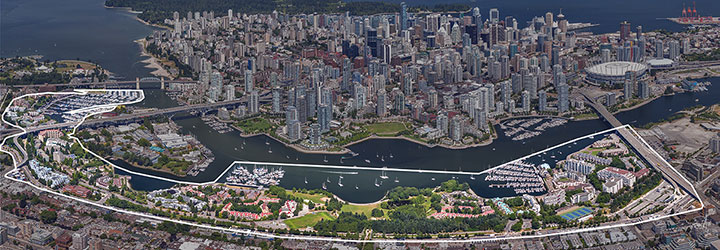

The Council-approved False Creek South Provisional Vision Statement and Guiding Planning Principles ("Vision and Principles") are intended to set the foundation for the long-term planning of False Creek South.
The Vision and Principles are an outcome of an extensive 10-month consultation process with residents, surrounding communities, and the broader public.
Long-term comprehensive planning for False Creek South will occur at an appropriate time, following technical assessments that will help us better understand the condition of the land and buildings in False Creek South.
Facts about the area
![]()
Land area
55 hectares
(136 acres)
![]()
Population
Around 5,600 people
(2016 Census)
